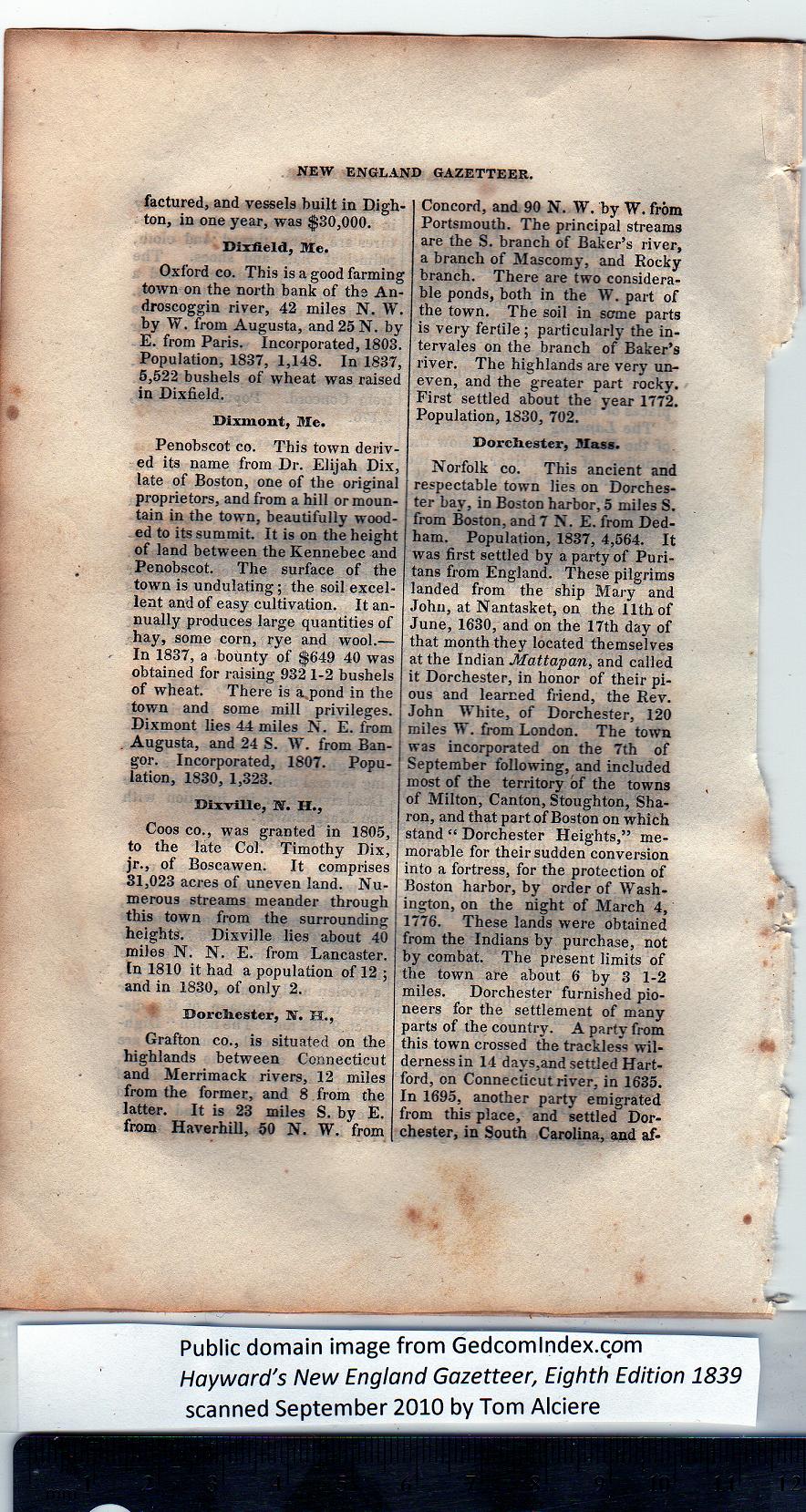|
factured, and vessels built in Digh-
ton, in one year, was $30,000.
Dixfield, Me.
Oxford co. This is a good farming
town on the north bank of the An-
droscoggin river, 42 miles N. W.
by W. from Augusta, and 25 N. by
E. from Paris. Incorporated, 1803.
Population, 1837, 1,148. In 1837,
5,522 bushels of wheat was raised
in Dixfield.
Dixmont, Me.
Penobscot co. This town deriv-
ed its name from Dr. Elijah Dix,
late of Boston, one of the original
proprietors, and from a hill or moun-
tain in the town, beautifully wood-
ed to its summit. It is on the height
of land between the Kennebec and
Penobscot. The surface of the
town is undulating; the soil excel-
lent and of easy cultivation. It an-
nually produces large quantities of
hay, some corn, rye and wool.—
In 1837, a bounty of $649 40 was
obtained for raising 932 1-2 bushels
of wheat. There is a.pond in the
town and some mill privileges.
Dixmont lies 44 miles N. E. from
Augusta, and 24 S. W. from Ban-
gor. Incorporated, 1807. Popu-
lation, 1830, 1,823.
Dixville, N. H.,
Coos co., was granted in 1805,
to the late Col. Timothy Dix,
jr., of Boscawen. It comprises
31,023 acres of uneven land. Nu-
merous streams meander through
this town from the surrounding
heights. Dixville lies about 40
miles N. N. E. from Lancaster.
In 1810 it had a population of 12 ;
and in 1830, of only 2.
Dorchester, N. H.,
Grafton co., is situated on the
highlands between Connecticut
and Merrimack rivers, 12 miles
from the former, and 8 from the
latter. It is 23 miles S. by E.
from Haverhill, 50 N. W. from |
Concord, and 90 N. W. by W. from
Portsmouth. The principal streams
are the S. branch of Baker’s river,
a branch of Mascomy, and Rocky
branch. There are two considera-
ble ponds, both in the W. part of
the town. Tbe soil in scrme parts
is very fertile; particularly the in-
tervales on the branch of Baker’s
river. The highlands are very un-
even, and the greater part rocky.
First settled about the year 1772.
Population, 1830, 702.
Dorchester, Mass.
Norfolk co. This ancient and
respectable town lies on Dorches-
ter bay, in Boston harbor, 5 miles S.
from Boston, and 7 N. E. from Ded-
ham. Population, 1837, 4,564. It
was first settled by a party of Puri-
tans from England. These pilgrims
landed from the ship Mary and
John, at Nantasket, on the 11th of
June, 1630, and on the 17th day of
that month they located themselves
at the Indian Mattapan., and called
it Dorchester, in honor of their pi-
ous and learned friend, the Rev.
John White, of Dorchester, 120
miles W. from London. The town
was incorporated on the 7th of
September following, and included
most of the territory of the towns
of Milton, Canton, Stoughton, Sha-
ron, and that part of Boston on which
stand “ Dorchester Heights,” me-
morable for their sudden conversion
into a fortress, for the protection of
Boston harbor, hy order of Wash-
ington, on the night of March 4,
1776. These lands were obtained
from the Indians by purchase, not
by combat. The present limits of
the town are about 6 by 3 1-2
miles. Dorchester furnished pio-
neers for the settlement of many
parts of the country. A party from
this town crossed the trackless wil-
derness in 14 days,and settled Hart-
ford, on Connecticut river, in 1635.
In 1695, another party emigrated
from this place, and settled Dor-
chester, in South Carolina, and af- |
